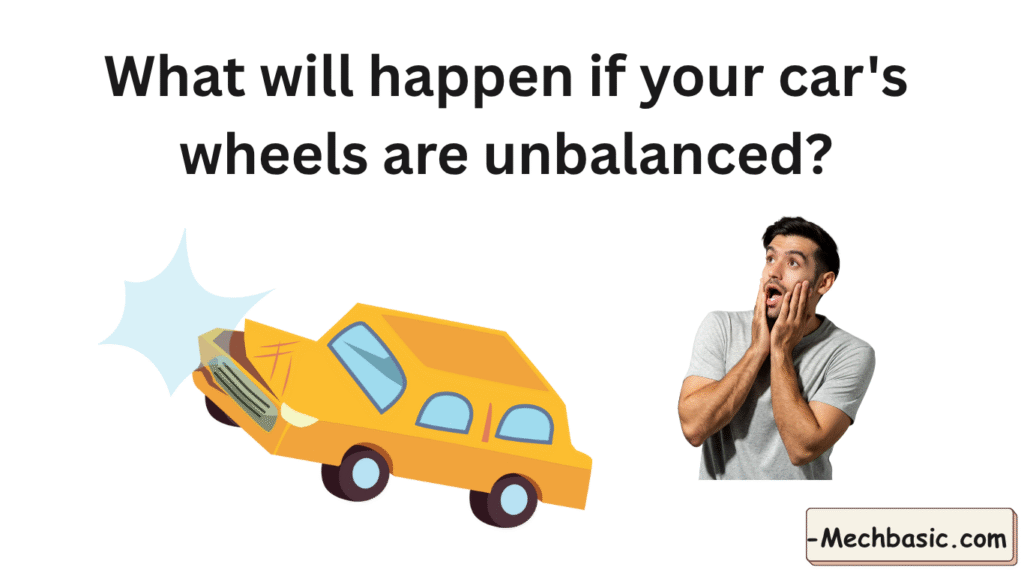Let’s go in detail about what happens if a car’s wheels are unbalanced:

1. What Are Wheel Imbalances?
Wheel imbalance occurs when the weight of a wheel and tire assembly is not evenly distributed around the axle.
- Even a small imbalance can cause vibrations.
- Usually caused by:
- Tire wear
- Missing or shifted wheel weights
- Manufacturing defects
2. Symptoms of Unbalanced Wheels
| Symptom | Explanation |
|---|---|
| Vibration in steering wheel | Most noticeable at speeds of 50–70 mph; indicates front wheel imbalance |
| Vibration in seat or floorboard | Indicates rear wheel imbalance |
| Uneven tire wear | Imbalanced wheels wear unevenly, reducing tire life |
| Noisy tires or humming sound | Wheels may produce noise due to uneven rotation |
| Suspension wear | Prolonged imbalance stresses suspension components |
| Reduced fuel efficiency | Extra friction and rolling resistance from vibrations |
3. Potential Consequences of Driving With Unbalanced Wheels
- Poor ride comfort: Vibrations make driving uncomfortable.
- Accelerated tire wear: Tires may develop flat spots or uneven tread wear.
- Suspension and steering damage: Bearings, shocks, and tie rods can wear prematurely.
- Brake system impact: Vibrations can affect braking performance slightly.
- Reduced fuel efficiency: Vehicle consumes more fuel due to additional friction.
4. How Wheel Balancing Works
- Remove tire and wheel assembly from the vehicle.
- Spin the wheel on a balancing machine.
- Machine detects heavy spots causing vibration.
- Technician attaches small wheel weights to counterbalance uneven distribution.
- Reinstall wheel and test drive for smooth rotation.
Note: Most modern shops also offer dynamic balancing, which balances the wheel while it rotates at speed.
5. How Often Should Wheels Be Balanced?
- After installing new tires.
- After repairing a flat tire.
- If you notice vibrations while driving.
- Periodically, every 5,000–7,500 miles, depending on driving conditions.
✅ Summary
- Wheel imbalance = uneven weight distribution in wheel/tire assembly.
- Symptoms: Steering vibration, uneven tire wear, noise, poor ride comfort.
- Consequences: Faster tire wear, suspension damage, reduced fuel efficiency, compromised safety.
- Solution: Professional wheel balancing using machine and wheel weights.
💡 Tip:
Even minor wheel imbalance can cause vibrations that damage suspension over time, so it’s better to fix it early rather than wait for severe wear or damage.
Other courses:



